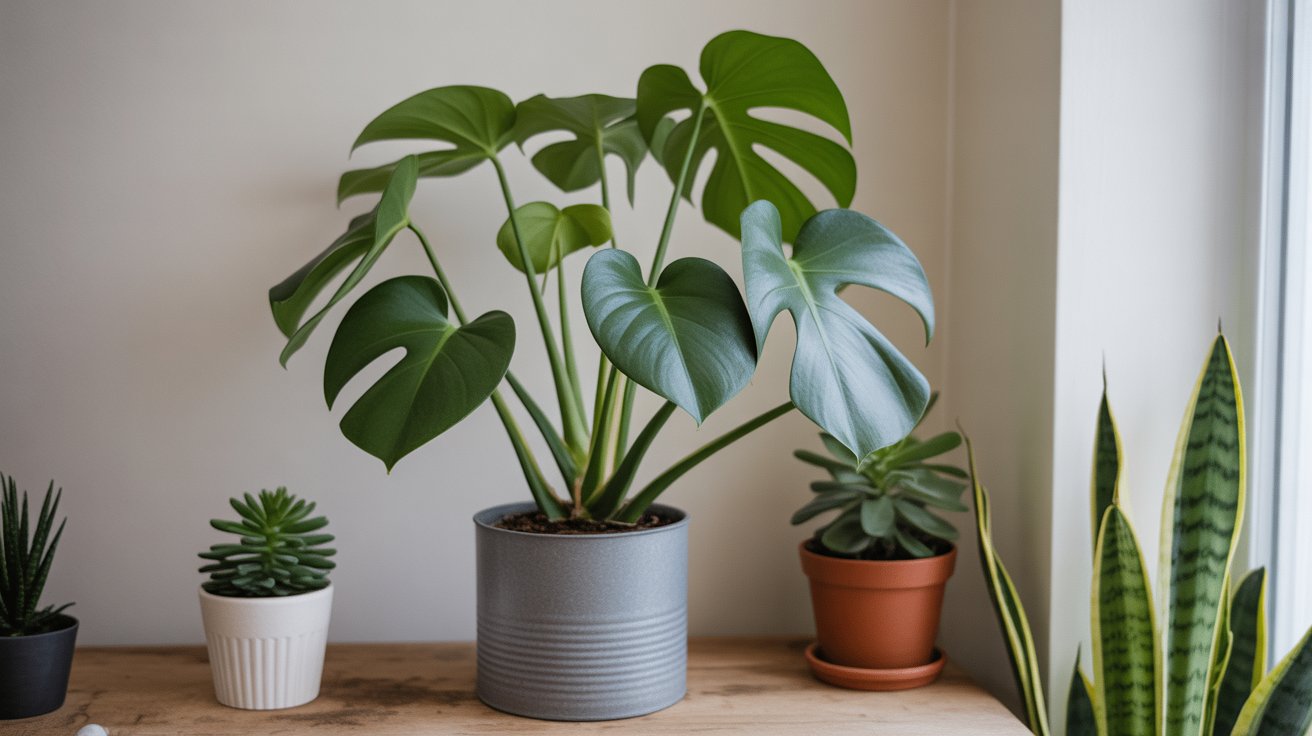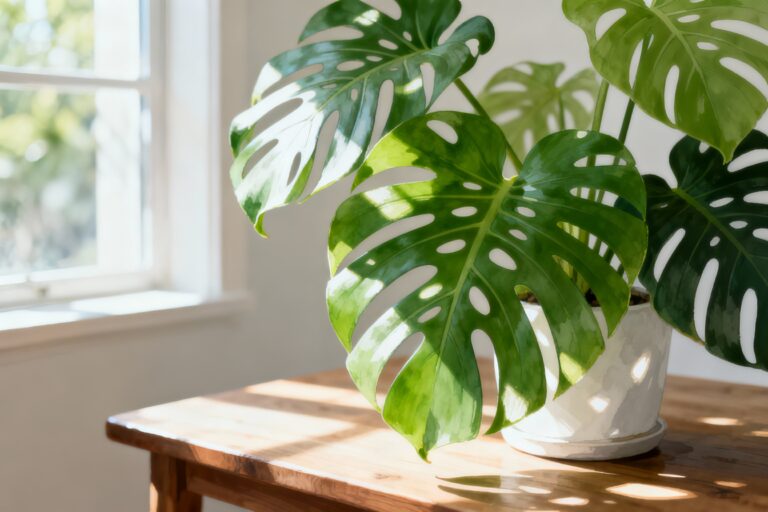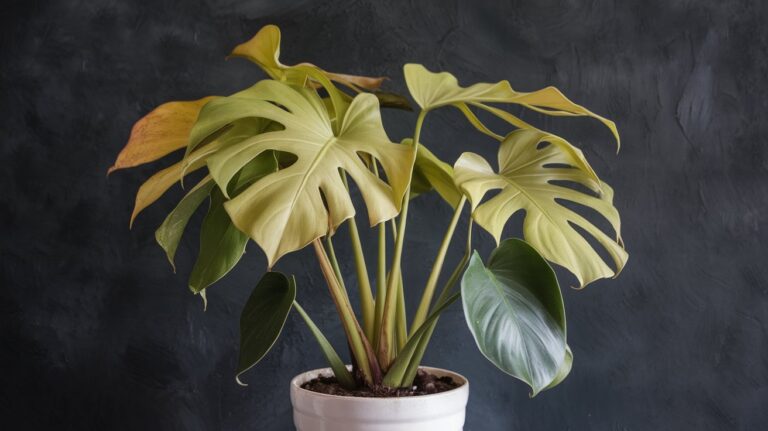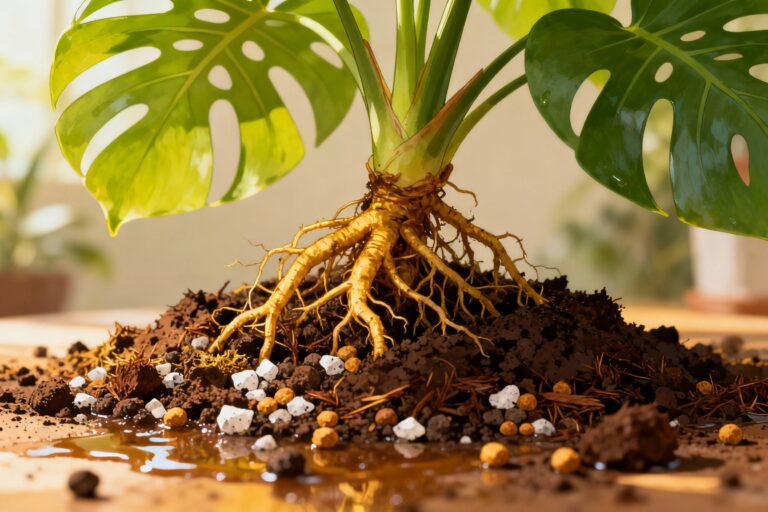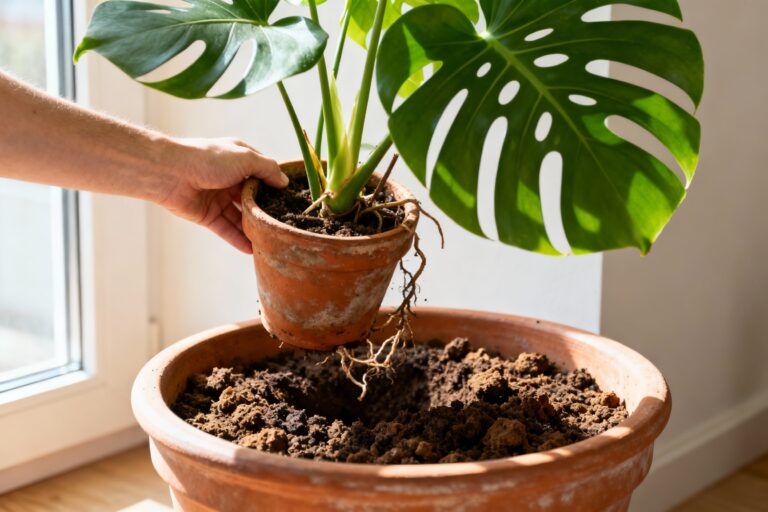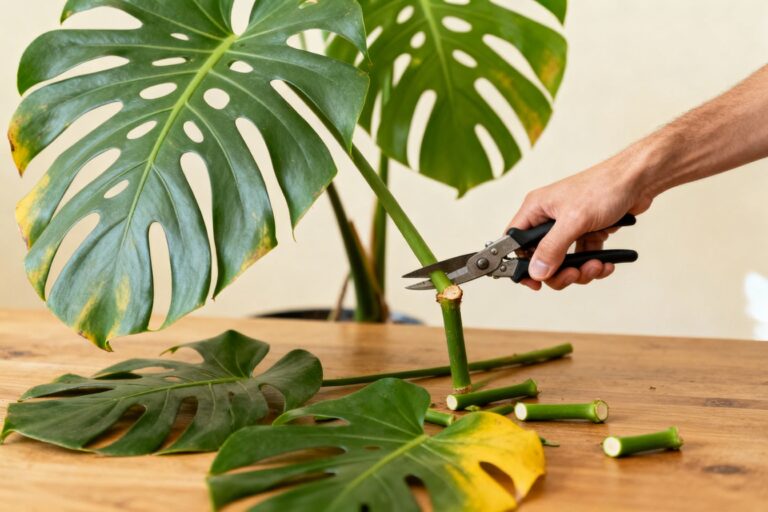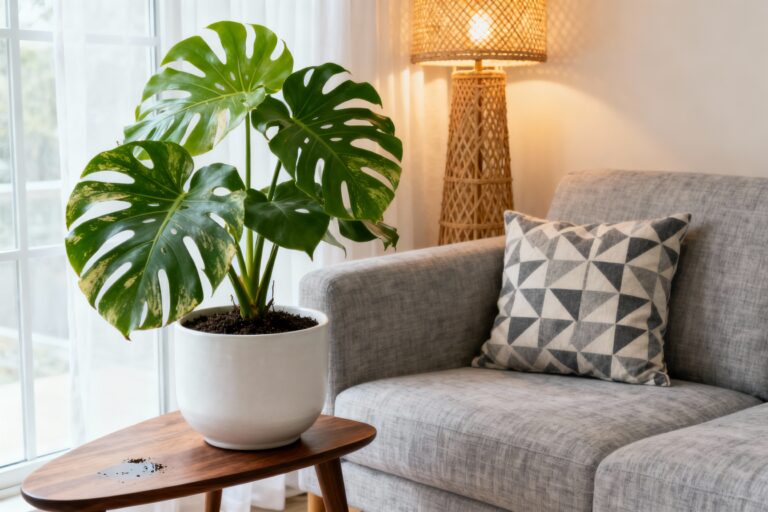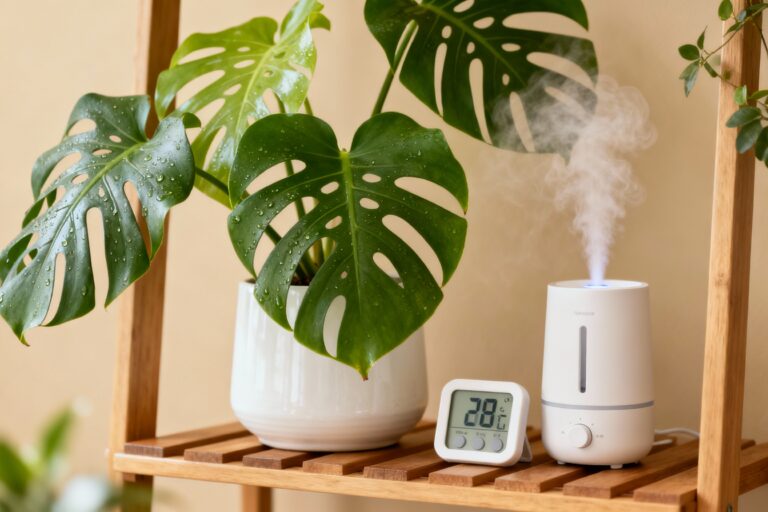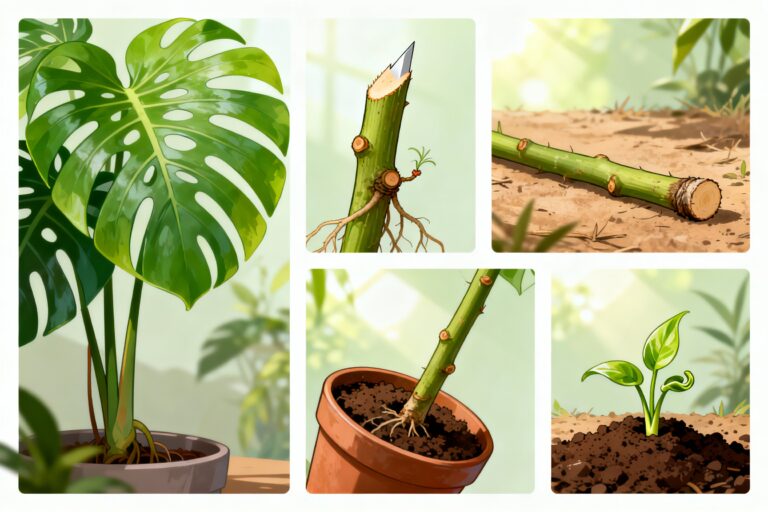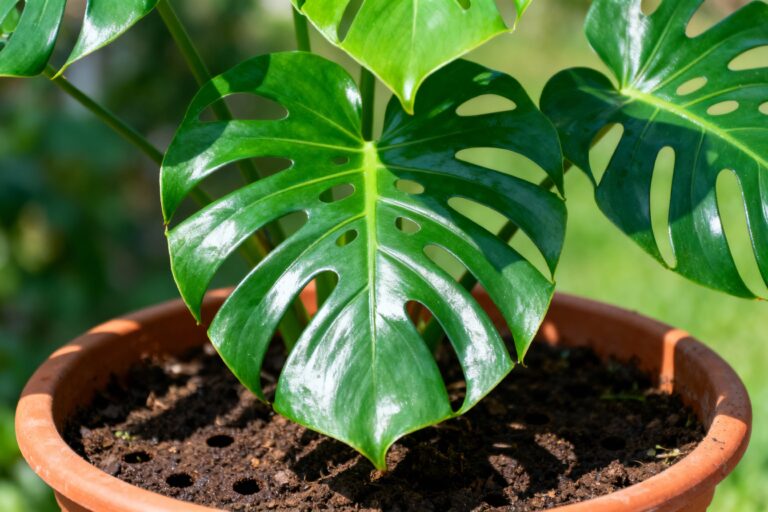Monsteras don’t want constant attention. They want a drink, a breather, and some light gossip from the windowsill. If your plant’s leaves look droopy or crispy and you feel personally attacked, you’re not alone.
The trick isn’t more water—it’s smarter water. Let’s make your Monstera thrive without turning its pot into a swamp.
Know Your Monstera’s Thirst Signal
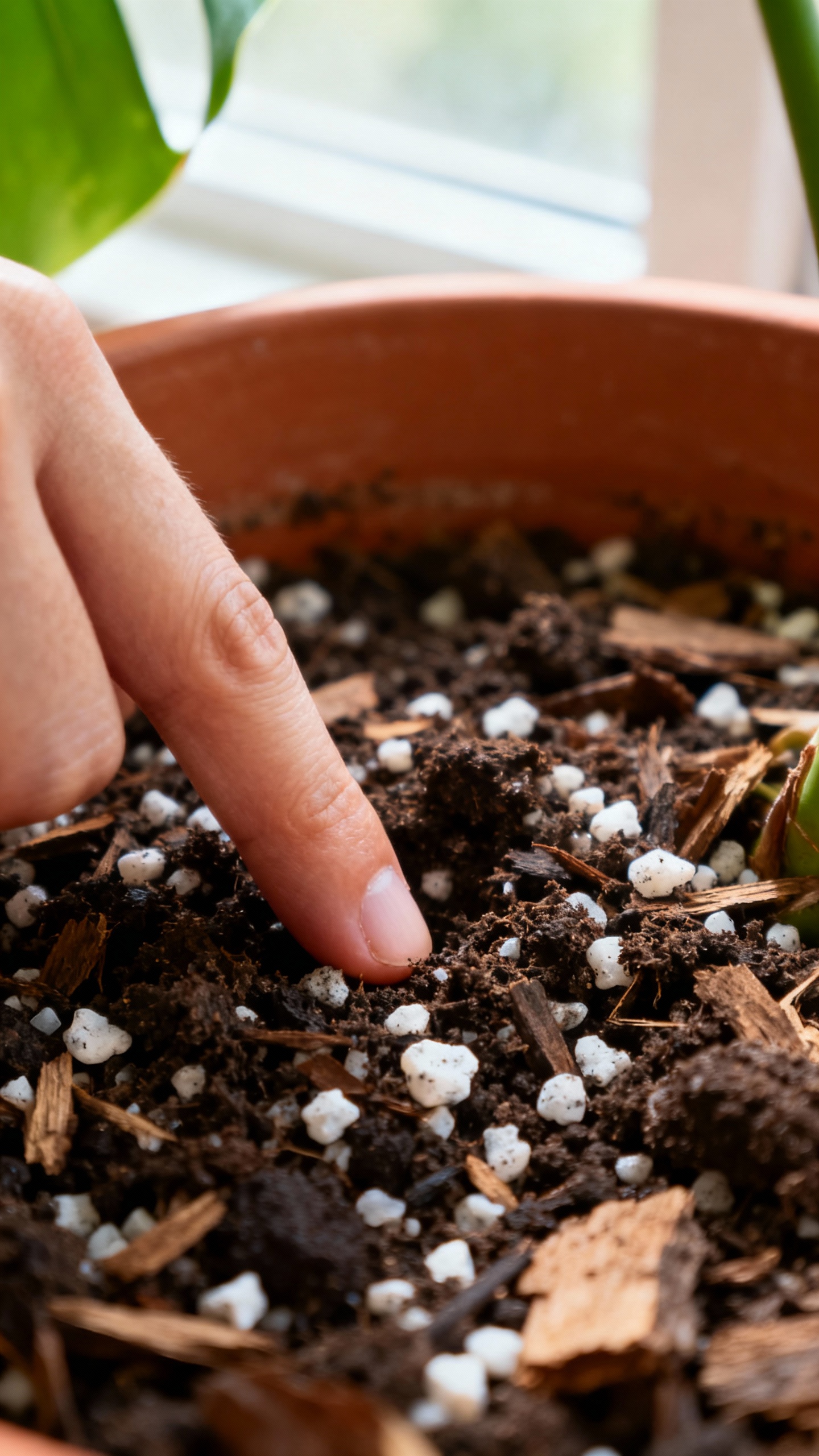
You don’t need a PhD in botany—just learn your plant’s cues. Monsteras like their soil to dry out partially between waterings.
If the top few inches feel dry, that’s your green light. If it still feels cool and damp? Wait. Quick checks that actually work:
- Finger test: Stick your finger 2 inches into the soil.
Dry? Water. Damp?
Chill.
- Wooden chopstick test: Insert it into the soil. If it comes out clean, it’s time to water. If it’s muddy, hold off.
- Moisture meter: Handy, but don’t worship it.
Aim for 3–4 on the scale for most mixes.
What “thirsty” looks like
A thirsty Monstera gets mildly droopy and the top soil turns light and dusty. Leaves won’t feel crisp; they’ll feel a bit limp. Overwatered leaves look sad too, but the soil tells the real story—wet soil + droop = overwatering, not thirst.
Water Less Often, But More Completely
Plants love a good, thorough drink—not a daily sip.
When it’s time, water deeply until you see runoff, then let it drain fully. That encourages strong roots and prevents salt buildup. Game plan:
- Move the plant to the sink or set it on a saucer you can empty.
- Water slowly and evenly around the pot until water runs from the drainage holes.
- Let it drain for 10–15 minutes. Toss any leftover water in the saucer.
No feet in puddles—ever.
How much is “deeply”?
As a rough guide, use about 25–30% of the pot’s volume in water. For a 10-inch pot, that might be 4–6 cups. FYI, your pot size, soil mix, and climate can shift this a bit.
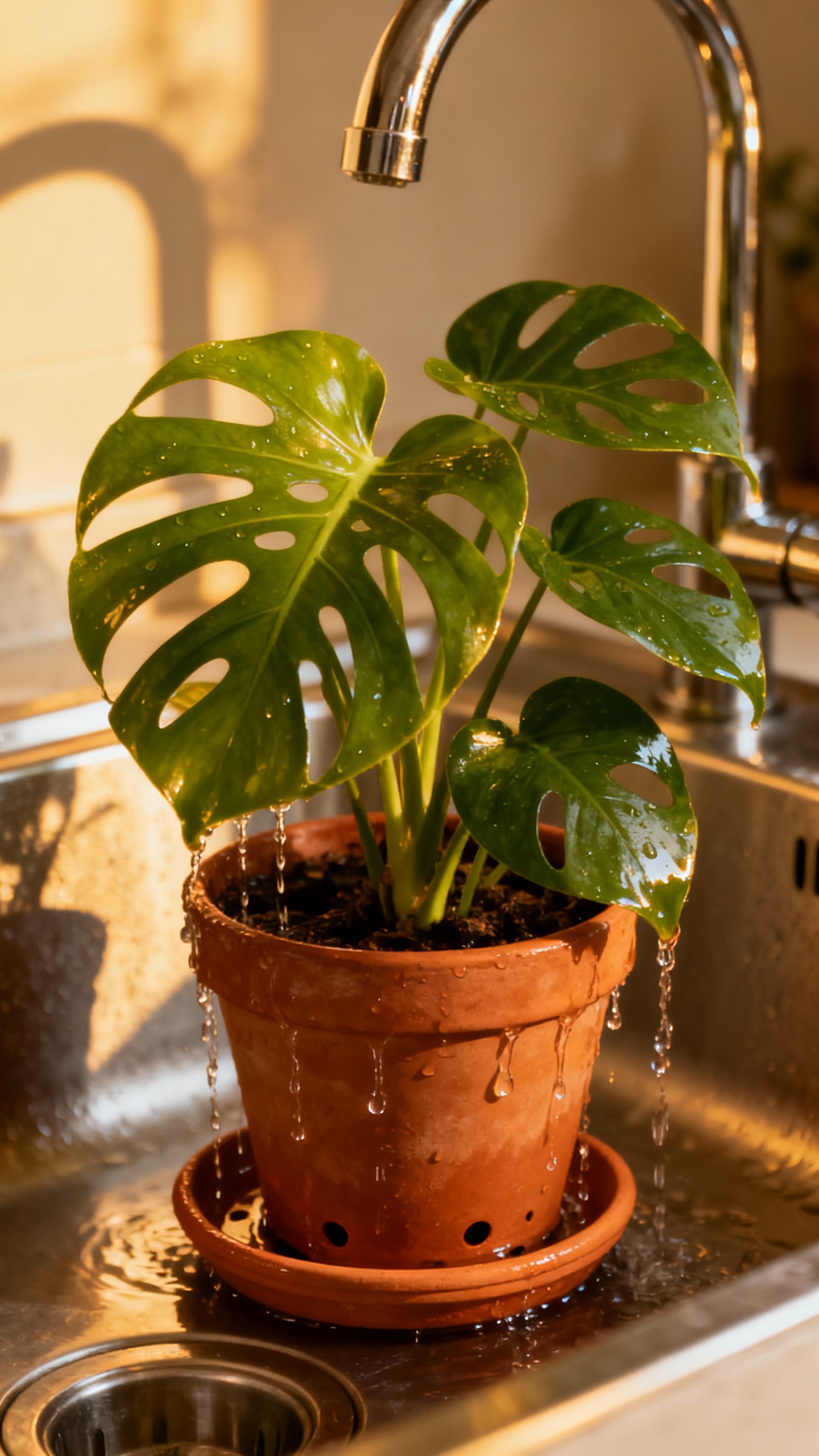
Match Watering to Season and Environment
Monsteras slow down when light drops.
That means less water in winter and more in spring/summer. You won’t water on a schedule—you’ll water based on conditions. Consider these factors:
- Light: Brighter light = faster drying = more frequent watering.
- Temperature: Warm air speeds drying; cool rooms slow it down.
- Humidity: High humidity slows evaporation. Dry homes (hey, heaters) dry soil fast.
- Pot size: Larger pots hold moisture longer.
Smaller pots dry out quicker.
Winter mode
In winter, you might water every 2–4 weeks, not weekly. And yes, that feels weird at first. Check the soil, not the calendar.
Soil and Pots: Your Anti-Overwatering Armor
You can’t outsmart bad soil.
A chunky, airy mix lets water pass through and oxygen reach roots—both prevent rot. Think of it as good airflow for the underground. Use a mix like:
- 1 part high-quality potting soil
- 1 part perlite or pumice
- 1 part bark (orchid bark is perfect)
- Optional: a handful of coco coir for moisture balance
Pot choice matters:
- Drainage holes: Non-negotiable.
- Terracotta: Breathable, dries faster—great if you overwater.
- Plastic/ceramic: Holds moisture longer—fine if your space runs dry.
Repotting and root checks
If water sits on top and won’t soak in, your soil may be compacted. Repot every 1–2 years, or when roots circle the pot.
Trim off mushy, brown roots if you see them—they’ve gone to the dark side.
Water Quality: Don’t Overthink It (But Don’t Ignore It)
Most Monsteras don’t demand fancy water, but super hard water or water with lots of chlorine can annoy them over time. If you see crusty white buildup on soil or droopy tips that never improve, consider a change. Easy upgrades:
- Let tap water sit overnight to off-gas chlorine (not chloramine, but still helps temperature-wise).
- Use filtered water if your tap is very hard.
- Flush the pot every few months with extra water to remove salt buildup.
Temperature matters too
Use room-temperature water. Ice-cold water can shock roots.
Hot water… let’s not.
Common Overwatering Red Flags (and Fixes)
Overwatering doesn’t always mean too much water in one go. Usually, it means watering too often. Roots need air.
Constantly wet soil suffocates them, then rot kicks in—gross and fatal. Watch for:
- Yellowing leaves starting from the bottom while soil stays wet
- Mushy stems at the base or a swampy smell
- Brown spots with yellow halos (classic “I’m soggy” complaint)
Fix it fast:
- Stop watering. Let the soil dry to mid-depth.
- Increase airflow and light (not direct sun).
- Slide the plant out and check roots if it smells funky. Trim brown mushy roots, repot in fresh, airy mix.
- Water less frequently and adjust your environment.
Humidity Hacks Without Drowning Your Plant
Monsteras love humidity, but humidity ≠ more watering.
Keep the leaves happy without soaking the soil. Try these:
- Use a humidifier near the plant (IMO the most reliable).
- Group plants together to create a microclimate.
- Place the pot on a pebble tray with water below the pot—not touching it.
Misting?
Light misting won’t increase humidity for long, but it can clean leaves. Just avoid misting late at night or onto wet soil. FYI, dusty leaves block light and slow growth, so wipe them occasionally.
Set a Simple Routine (That You’ll Actually Follow)
You don’t need a complicated spreadsheet.
Just build a rhythm that respects your plant’s signals. Weekly quick-check ritual:
- Press the soil. Dry top 2 inches? Water day.
- Lift the pot.
Suddenly lighter? Likely time to water.
- Scan leaves for yellowing or droop. Cross-check with soil moisture before reacting.
- Empty saucers after 10–15 minutes.
Always.
Traveling or forgetful?
Consider a self-watering insert or a wick system, but only with airy soil. These help maintain even moisture without drowning roots. Test it while you’re home first—don’t trust gadgets blindly.
FAQ
How often should I water my Monstera?
There’s no universal schedule, but most people water every 7–14 days in bright, warm conditions and every 2–4 weeks in winter.
Let the top 2 inches of soil dry before watering again. Trust the soil, not the calendar.
Why are my Monstera leaves turning yellow?
Usually overwatering. Check the soil—if it’s consistently wet, let it dry out and improve drainage.
If the plant sits in low light, move it brighter so it uses water faster.
Can I use ice cubes to water?
Please don’t. Cold water shocks tropical roots and ice makes uneven moisture pockets. Use room-temperature water and soak thoroughly instead.
Do Monsteras need distilled or filtered water?
Not usually.
If your tap water is very hard or leaves mineral crust, filtered water can help. Otherwise, normal tap water at room temperature works fine.
What’s the best pot for avoiding overwatering?
A pot with drainage holes—non-negotiable. Terracotta helps by wicking moisture, especially if you tend to overwater.
Pair it with a chunky soil mix for the win.
My Monstera droops after watering. Did I mess up?
Probably not. Some plants droop briefly as they adjust to the water weight.
If droop continues and the soil stays wet for days, reassess light, soil mix, and watering frequency.
Conclusion
Watering a Monstera isn’t mystical; it’s timing and texture. Let the top few inches dry, then water deeply and drain well. Use chunky soil, give it good light, and adjust with the seasons.
Do that, and your Monstera will reward you with big, glossy leaves—and zero swamp drama. IMO, that’s plant-parent bliss.
